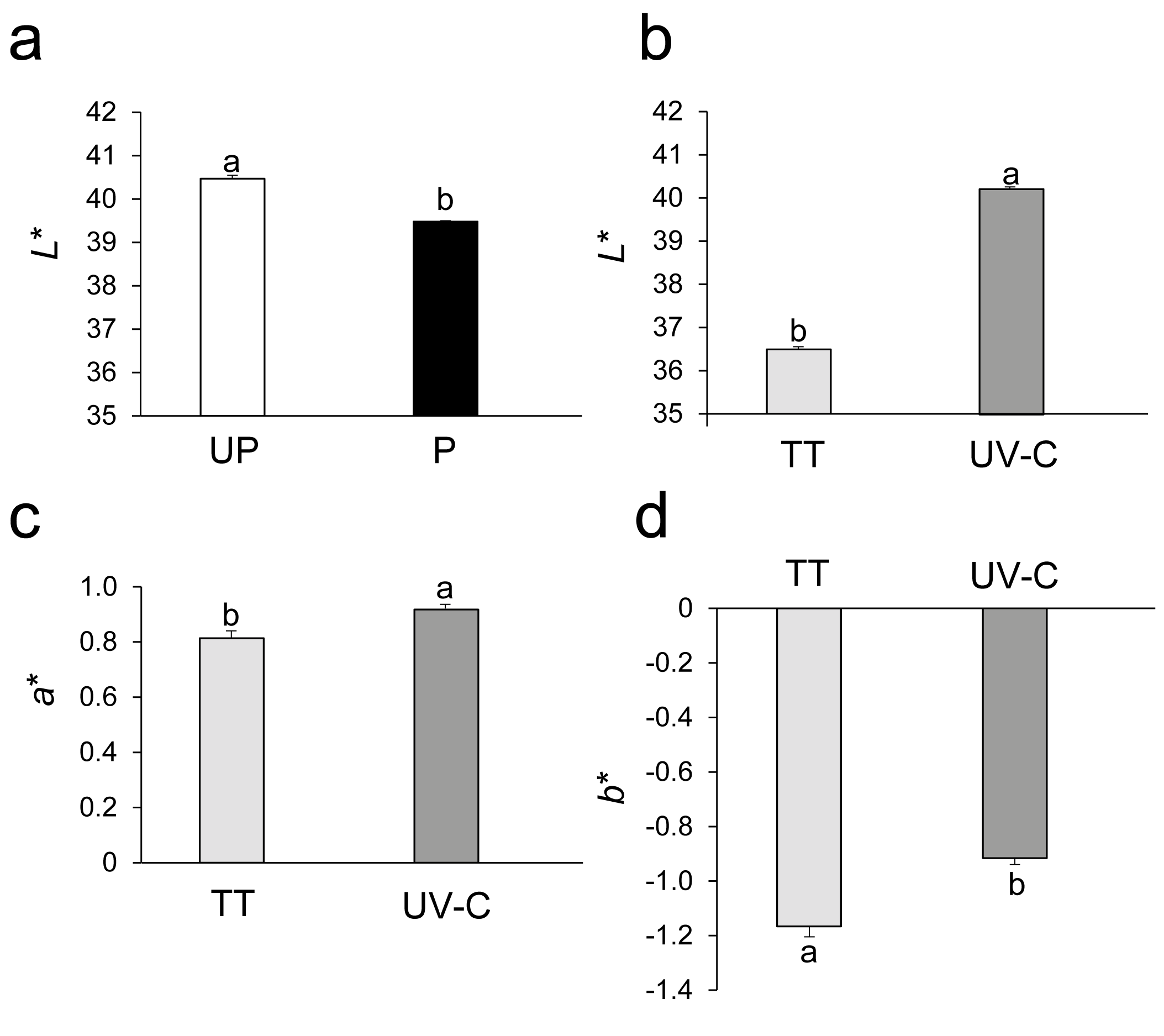 |
|
UV-C irradiation doses (12.8, 24.2, 35.8, and 54.6 mJ×cm-2) on the physicochemical and microbiological properties of 10% Aloe vera gel at different pHs (3.5, 4.5, and 5.5) were evaluated. An unprocessed treatment (UP) and a short (45 s) thermal treatment (TT) at 90 °C were used as controls. The irradiation doses and pH levels affected (p < 0.05) the elimination of coliforms and aerobic mesophilic microorganisms with the same efficiency as TT. Molds and yeasts were successfully eliminated at doses ≥24.2 mJ×cm-2 regardless of pH. Reducing sugars, total polyphenols, and aloin A content decreased as pH increased (p < 0.05). Although, the antioxidant activity was significantly reduced at doses ≥35.8 mJ×cm-2. TT and UV-C treatments affected the a* color parameter (p < 0.05), resulting the UV-C with the highest values. In both treatments, a reddish color was present at pH ≥ 4.5. The UV-C treatment resulted in minimal changes in most physicochemical properties, compared to UP treatment. However, TT significantly affected most physicochemical properties of A. vera gel blends. These results suggest that dose of 24.2 mJ×cm-2 in a continuous flow UV system is a non-thermal alternative for the stabilization of 10% A. vera gel blends at pH of 3.5.
Keywords: UV-C irradiation, Aloe vera, acemannan, polyphenols, aloin A
.
|
|
 |

